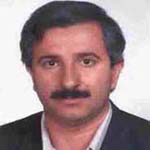City and Social Justice: Analytic Inequalities of Neighborhood (The Case Study: The Old Neighborhoods Miondoab City)
Extended Abstract Introduction City looks to has different dimensions new life and perspective of human development. Nonetheless, emphasis on quantitative aspects of growth in many countries, especially in developing countries leads to the two cities is polarization. The most important consequence of the rapid growth of urbanization and physical development of cities in ten countries in recent disintegration of the urban system of distribution centers that is service the underlying social inequality of citizens and enjoyment of land uses in the urban fabric of city services. In fact the city as a context of human biology with a major role in making sense of satisfaction and had actually shape human life style and his quality of life determinants. So Attention is the physical environment of the city planners and organizing its significant role in improving the quality of human life. Yet people live environment and sense of his environment is effective more than economic and demographic factors - the social quality of life. Methodology This method was done research - descriptive and analytical studies of the first exploratory visit to a library and conducted preliminary field study using the research tools. Gathering information has been library resources and questionnaire. Statistical community citizen residing in the tissues studied were old Sampling and thus the sample size formula using questionnaires Cochrane (a relationship) (Hafez Online, 1386, 139) and then determine the total fabric of neighborhoods in which detailed plans have been divided into 12 neighborhoods, And then determine the total fabric of neighborhoods in the detailed plan has been divided into 12 neighborhoods, has been sampled for analysis, In this study, various indicators were that the indicators were classified in six groups. Compared to the enjoyment of neighborhoods, each of the options for very high, high, medium, low, very low in terms of questionnaires have been considered such weight that were 3, 2, 1, -1,-2. Multiplying the share of each of the options that option and the total weight of all weights for each neighborhood, the relative weight of each neighborhood is calculated. Finally, through the neighborhood ranking of quality of life indicators used entropy method and SAW And to explain and ranking per capita is used urban neighborhoods through entropy and TOPSIS method. Results and Discussion Environmental assessment of settlement patterns can - especially on satisfaction - identify the current situation; knowledge of the strengths, deficiencies and potential deficiencies with the aim of promoting environmental quality accommodation is effective. In this context one of the best models evaluated, the use of resident’s views regarding the present status of their home and the current situation and possibilities of urban is per capita, In this paper quality of life, city fabric mentioned localities using 17 indicators were examined first the importance of each of the indicators of neighborhood-level indicators that we have access to green space with the most important was the First Place. The main reasons for the lack of local parks in the city neighborhoods are mentioned. In the next rank indicators and social security are very important indicators of quality and Howe Street, sewage disposal and the passages and the quality of surface water are the next stars in the future planning must be attention to these problems In the next stage using TOPSIS we compare land use of distribution in the neighborhood descent to the surface that the per capita standard of Housing and Urban Development has suggested, were over a high imbalance. In most indicators of the highest per capita standard was high and the lowest per capita rate per person than the standard level had significant differences Then each neighborhood point of separation than the ideal level (standard) 21. 4 neighborhoods, 19 and 26 the least distance to the surface and were ideal localities 8, 11, had the third highest distance. In the final stage we rank neighborhoods based on the quality of life indicators using SAW model based on per capita in the neighborhood level using the TOPSIS model. Conclusion Results indicate that except for the fourth quarter described above, other areas have a significant relationship, and every neighborhood of its per capita user is close to the standard, quality of life was better in this neighborhood. Based on studies conducted with the SAW technique localities 21, 20, 19 and 16 in quality of life indicators in the first rank have been 20 quarters, 4. 21, 19 and 16 in the distribution of per capita urban land uses techniques based on TOPSIS ranks.
- حق عضویت دریافتی صرف حمایت از نشریات عضو و نگهداری، تکمیل و توسعه مگیران میشود.
- پرداخت حق اشتراک و دانلود مقالات اجازه بازنشر آن در سایر رسانههای چاپی و دیجیتال را به کاربر نمیدهد.



